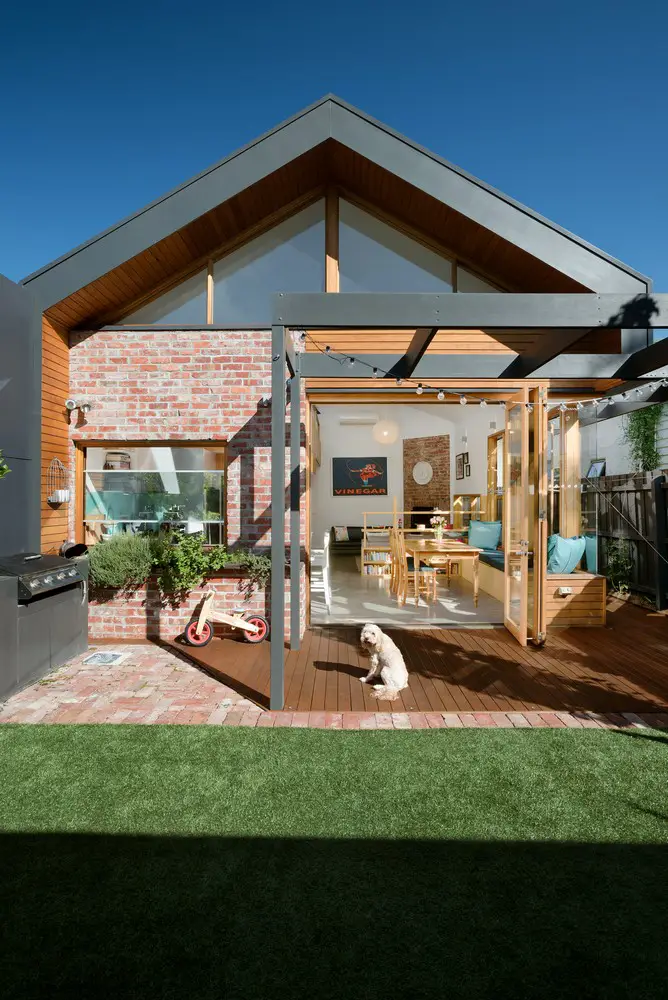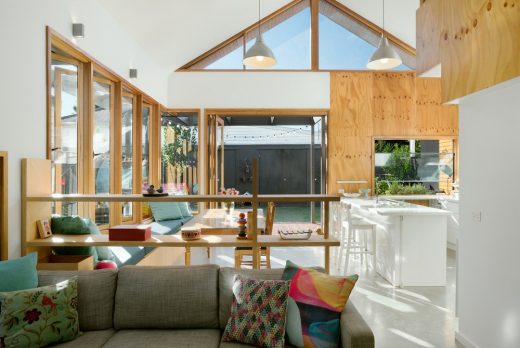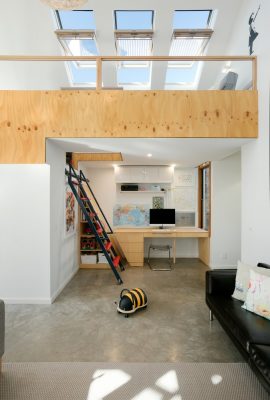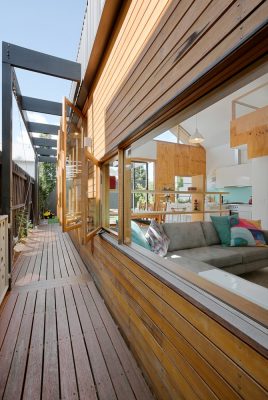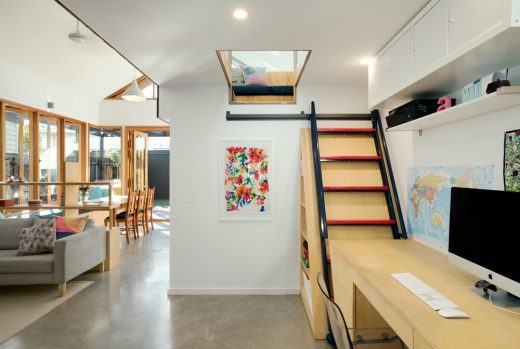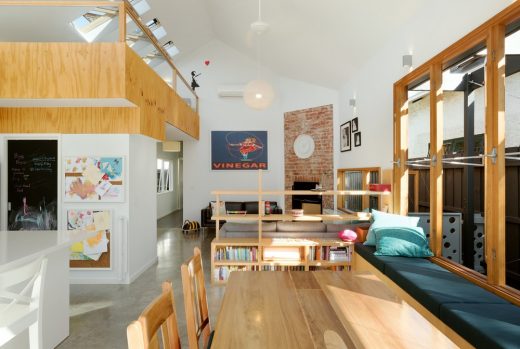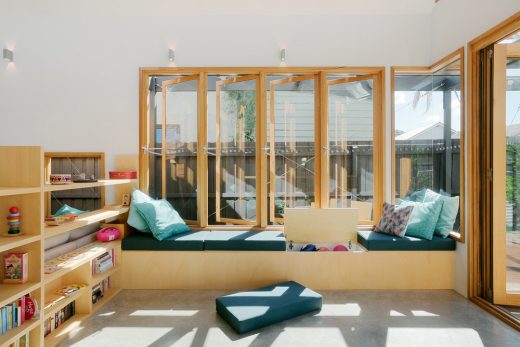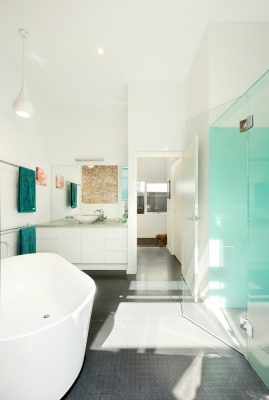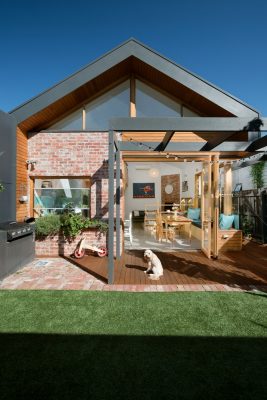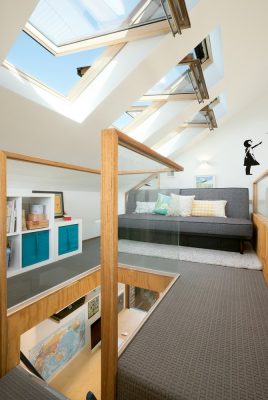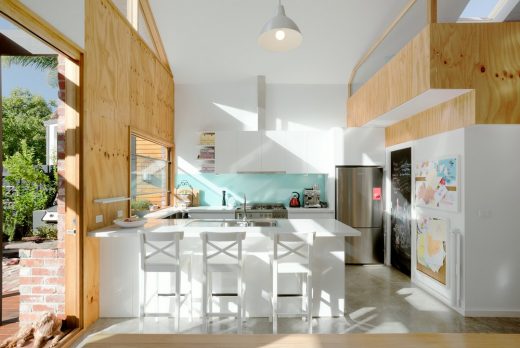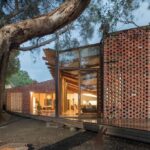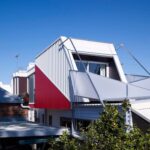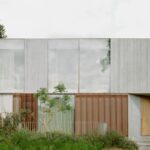Smart Home, Melbourne Residence, Interior Design Australian Real Estate, Victoria Home Photos, Architecture
The Smart Home in Melbourne
Modern Residential Renovation Project in Victoria, Australia, design by the Green Sheep Collective
13 Nov 2017
Smart Home in Melbourne
Design: Green Sheep Collective
Location: Melbourne, Victoria, Australia
Environmentally Designed Smart Home
Smart Home is a renovation and extension to a two-bedroom single-fronted timber Victorian cottage in inner Melbourne. It utilises a wide range of social, healthy, environmental and passive solar design principles and products to create a high-level environmentally sustainable home that is also modestly-sized and affordable.
We aimed to create a project that achieves: An outstanding, affordable home: It was important to us to create an example of best-practice environmentally sustainable design that is both achievable and affordable for many Australians.
The final build cost per square metre for this project is $2,300/m2 +GST. We believe this is an excellent result for a home designed to high-level environmentally sustainable design principles, where products and materials included in the home have:
• positive impact on energy efficiency (lifting the efficiency of the whole home, not just the extension);
• low to zero emissions (such as E0 cabinetry, and healthy adhesives);
• ethical procurement, harvesting and work practices (such as radially sawn timbers);
• recycled and renewable components (such as Ecrete and Flexo recycled rubber flooring);
• low transport emissions;
• water saving impacts (such as Ecoverta water saving units);
• life-cycle analysis, including post-use responsible disposal (such as Livos oils);
• preferred products such as GreenTag, GECA and FSC certification; and
• reduction of non-renewable resources (such as re-use of recycled bricks).
A small, smart result: More space, however environmentally designed and constructed, still creates environmental impact. Thrive Research has shown that every 12 metre square room built in Australia creates the equivalent of 80,000km worth of car exhaust emissions, consumes 90 years’ worth of drinking water for four persons, and costs $24,000 in construction and energy bills over its lifetime *1.
Through carefully assessing the need for every additional square metre of home (and utilising a mezzanine instead of a second storey) we added 20% more usable indoor space to their existing home with only 13m2 additional footprint. *1. http://theconversation.com/size-does-matter-australias-addiction-to-big-houses-is-blowing-the-energy-budget-70271
Almost 50% landscape coverage: We aim to maintain as much landscape in our projects ‘€“ particularly in highly urbanised environments ‘€“ to enhance the wellbeing of ecosystems and inhabitants. Our clients requested a more thermally comfortable home with best-practice environmental credentials.
This project faced a number of critical challenges that had to be overcome in order to meet these sustainability and design targets. The constraints included overshadowing, poor orientation, and a small 7.5 metre wide east-west block built close to the boundary. The existing home was dark and leaky with a lean-to at the rear.
We needed to demolish the lean-to and create a whole-home solution that connected existing home with new renovation while improving the thermal performance of the home as a whole. We had to modify our clients’ initial brief for the second storey to achieve sustainability (and budget) targets.
Our clients were unaware of the environmental, spatial and fiscal costs of ‘going up’: the additional space required for the second storey to house the staircase and associated circulation spaces; ‘hidden’ costs for labour, scaffolding, insurances, materials, engineering, and design to accommodate overlooking legislation; heating, cooling, cleaning and maintenance requirements and ongoing costs, and so on.
Our response creates interesting volumes for architectural beauty, and minimises idle space by ensuring the floor plan is utilised to its full capacity through clever storage solutions and split level living. The single storey addition includes open plan living, dining and kitchen opening via large openable glazed doors to an outdoor deck.
A mezzanine over the pantry and study nook utilises the volumes created by the cathedral ceiling, while large openable skylights increase the perception of light and space, and double as ‘thermal chimneys’ to assist natural ventilation processes in summer.
Storage is integrated into built-in dining seating, while the study can easily be closed off by operating a large sliding door. The mezzanine stair is also integrated into this space, where it can slide in and out of a bookshelf.
Brick planter boxes are located directly outside windows to bring the garden closer to the house, and allow for a herb garden directly outside the kitchen window. This smart storage combines with beautiful material selections, natural light and exciting form to transform the cottage into a high performance, healthy, and comfortable modern residence.
Photography: Emma Cross
Smart Home in Melbourne images / information received 131117
Location: Melbourne, Victoria, Australia
Architecture in Melbourne
Melbourne Architecture Designs – chronological list
Melbourne Architecture Walking Tours
Melbourne Architect Offices – design studio listings
Brace House, Albert Park
Design: Finnis Architects
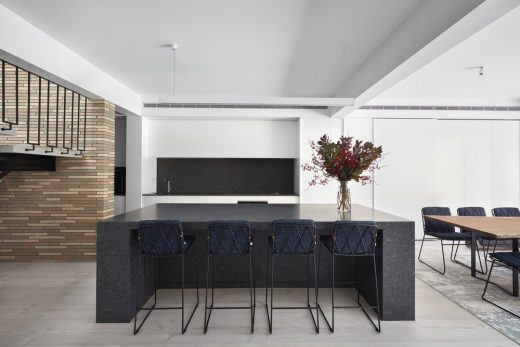
photograph : Tom Roe Photography
Brace House in Albert Park
Connect Six House
Design: Whiting Architects in collaboration with Fisher & Paykel
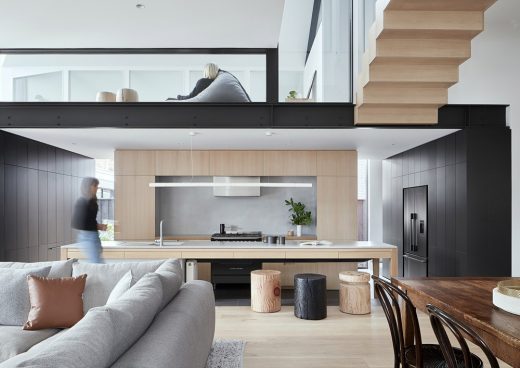
photograph : Shannon McGrath
Connect Six House
Melbourne Park Western Precinct
Comments / photos for the Smart Home in Melbourne page welcome

